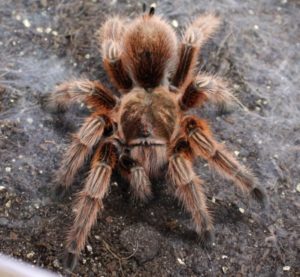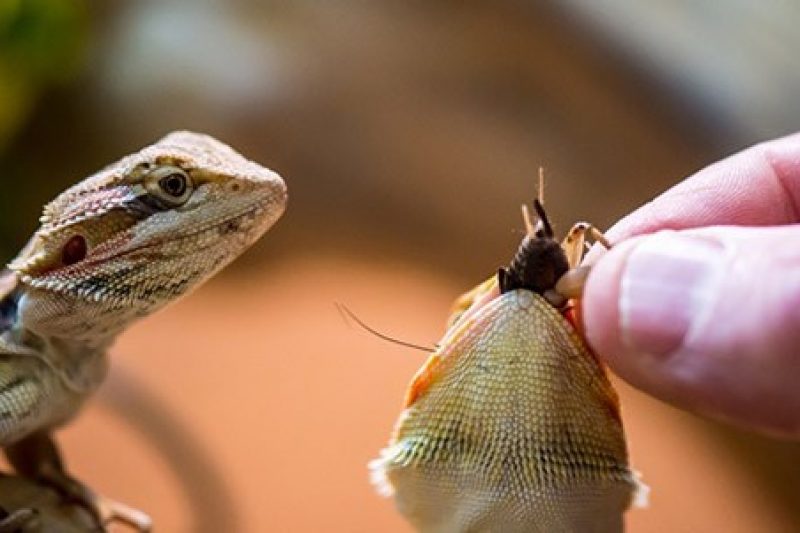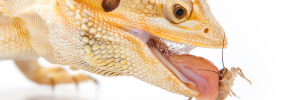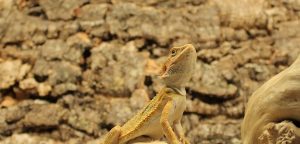
Tarantula care guide
Welcome to Evolution Reptiles’ guide to tarantula care! Whether you’re a seasoned arachnid enthusiast or just starting your journey into the fascinating world of these

We use this guide as part of the training for our store staff and thought that it would be useful to share it.
Feeding Training – Lizards
It’s important to know where a species originates from in the wild, as this will tell you what sort of food it eats. Consider whether it is diurnal, nocturnal, crepuscular, arboreal, terrestrial, fossorial. Those facts will give you a great deal of information, not just about diet. Check whether the animal is insectivorous, herbivorous or omnivorous; we will try to replicate the wild diet in captivity, so it is very important to know exactly what it is we are trying to mimic.
Livefoods are a staple for many lizards, mainly the easily bred locusts, crickets and mealworms. Many more are available, although not all of them may be cost effective. Silkworms are an excellent food, but are expensive and delicate; butterworms are very fatty; calci worms have an amazing calcium/phosphorus ratio, but many lizards find them unpalatable. Where possible, avoid using greenery/salad produced for human consumption. Compared to wild plants, they will be lacking in fibre and, probably, minerals. Try to grow or harvest wild plants, and make sure that variety is maintained – avoid feeding just one or two items.
Referring to the wild diet, use available foods to replicate this as closely as possible. Uromastyx eat tough desert vegetation and seeds, so offer tortoise-suitable weeds and birdseed mix. Also take into account any ontogenetic changes: baby beardies eat 80% insects and 20% vegetation, but by the time they reach adulthood these figures should be reversed. The adult diet will vary according to species and lifestage, so the diet should be tailored accordingly.
There is a generally accepted theory that a lizard should only ever be fed live insects that are no longer than the space between their eyes, and as a guide for baby lizards this isn’t bad. Adult lizards in good health – such as bearded dragons – are quite capable of eating quite large feeder insects, like adult locusts or adult hissing cockroaches. Salads should not be chopped up small, as part of their benefit is to clean the teeth as the animal tears off a piece of vegetation. Root vegetables should be thinly sliced, so that they can be bitten through. Portion size is also important; we do not want the lizard to pick out their favourite bits, and ignore the rest. In order to ensure a properly balanced diet, the animal should eat all of the food that is offered. If it leaves some in the bowl, offer less next time. Wastage is expensive!
Baby lizards need feeding daily, particularly if they are living in a group – a hungry baby beardie will snap at anything that moves, regardless of whether it belongs to a fellow lizard. Omnivores should be offered salad in the morning, so that they wake up, warm up, and when they start looking for food the salad is waiting. Insects should be fed later in the day; this encourages good dietary habits, especially in bearded dragons. Crepuscular/nocturnal geckos should be offered their food later in the afternoon, so that the supplements are still sticking to the bugs when they are hunting. If using a meal replacement gecko food, this should be offered just before lights out, so that it is as fresh as possible when the gecko comes looking for it.
Hip bones should not be obvious on a healthy lizard. It’s fine to be able to feel ribs, but they should not be obvious; a clearly visible spine and hollows around the eyes are indicators of very poor condition. Any lizard presented in this condition should see a vet immediately. Leopard and African Fat Tail geckos should have a broad, plump tail and a rounded body, and be able to open their eyes to look around them without discomfort; uromastyx should be rounded, including under the tail. A weight record can be useful, as it will indicate falling condition before it becomes obvious to the eye. This is worth recommending to pet owners, as they don’t usually have other animals to compare their own pet to.
It is very important not to over supplement. Although some is good, more is not necessarily better! The dangerous vitamins – the fat soluble A, D, E and K – can kill in excess. In order to fill in any gaps in normal nutrition, we recommend using a good multivitamin/multimineral supplement two to three times a week, and a plain calcium supplement the rest of the time. Food should always have some powder on it, as otherwise some lizards are very good at avoiding eating dusted food. There does not need to be much; feeder insects should not be white with dust, but just sprinkled, and the same is true with vegetation. No extra supplementation is necessary with the complete gecko foods, although any feeder insects offered should be dusted. Even if the supplementation regime is perfect, all feeder insects MUST be gut loaded to ensure a varied supply of micronutrients to the lizard.
Please also read


Welcome to Evolution Reptiles’ guide to tarantula care! Whether you’re a seasoned arachnid enthusiast or just starting your journey into the fascinating world of these

Why Do UVB Lamps for Reptiles Need to Be Replaced and How Often UVB lamps are essential for the health and well-being of reptiles, but

Why Reptiles Require UVB Light and How Their Bodies Use It Reptiles, unlike mammals, cannot synthesize vitamin D3 through their diet alone. Instead, they rely
Copyright 2021 Evolution Reptiles
All rights reserved.